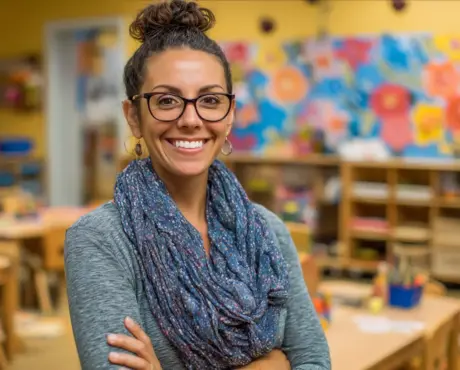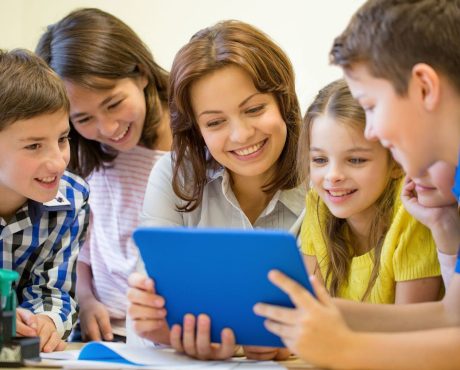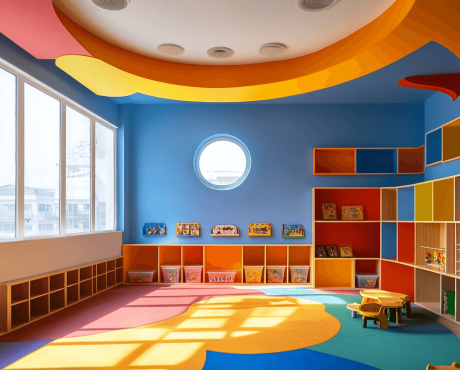
In the realm of educational methodologies, Montessori Education has emerged as a beacon of innovation, fostering an environment where learning is not just a process but a journey of self-discovery. Dr. Maria Montessori, the visionary behind this approach, laid the foundation for a system that values the uniqueness of each child and provides a transformative experience. In this blog post, we delve into the key principles and practices that make Montessori Education an innovative curriculum model, shaping the way children learn and educators teach.
Child-Centered Learning: Unlocking Potential
At the core of Montessori Education is a profound shift from teacher-centered to child-centered learning. In traditional educational models, a rigid curriculum often dictates the pace and content of instruction, leaving little room for individual exploration. Montessori classrooms, however, are carefully crafted environments where children are encouraged to follow their innate curiosity and interests.
Example: Picture a Montessori preschool where children engage with activities that align with their developmental needs. A three-year-old might be exploring the sensory experience of pouring water from one container to another, developing motor skills and concentration. The teacher acts as a guide, observing the child’s interests and providing materials that stimulate their curiosity. This child-centered approach not only cultivates a love for learning but also nurtures a sense of independence and self-motivation.
Multi-Age Classrooms: A Community of Learners
Montessori classrooms often break away from the conventional age-based grouping, opting for multi-age classrooms. This intentional mixing of age groups creates a microcosm of society where children interact with peers at different stages of development.
Example: In a Montessori elementary classroom, you might witness a nine-year-old helping a six-year-old understand a math concept using materials like the Stamp Game. This interaction is not just about academic support; it builds a sense of community and shared learning. Older students develop leadership skills and reinforce their understanding by teaching, while younger ones benefit from peer mentoring, creating a dynamic and collaborative environment.
Hands-On Learning Materials: Concrete Pathways to Understanding
Montessori Education places a premium on tactile, hands-on learning materials. These materials are not mere tools; they are carefully designed educational aids that serve as gateways to understanding abstract concepts.
Example: Consider a Montessori primary classroom where children engage with the “Grammar Boxes.” Instead of learning parts of speech through rote memorization, they manipulate cards and symbols to build sentences. This hands-on approach allows children to visualize and internalize grammatical concepts, transforming learning from a passive to an active, engaging process.
Freedom within Limits: Fostering Responsibility
In Montessori classrooms, freedom is not synonymous with chaos. The model strikes a delicate balance between autonomy and structure, giving children the freedom to choose their activities within well-defined limits.
Example: In a Montessori middle school, a student may have a block of time dedicated to working on a passion project. While they have the autonomy to choose the topic and format, there are guidelines and deadlines to ensure progress. This approach cultivates responsibility, time management, and decision-making skills, preparing students for the challenges of higher education and beyond.
Peace Education and Character Development: Nurturing Global Citizens
Montessori Education extends beyond academics to encompass character development and peace education. The curriculum actively promotes values such as empathy, collaboration, and an understanding of global interconnectedness.
Example: Imagine a Montessori high school where students embark on a project addressing a pressing global issue, such as climate change. Through interdisciplinary research, presentations, and community outreach, students not only deepen their understanding of the issue but also develop a sense of responsibility toward the global community. This holistic approach to education creates well-rounded individuals with a strong moral compass.
Individualized Progress: Beyond Grades and Assessments
Montessori Education rejects the one-size-fits-all approach to assessments. Instead of traditional grading systems, the focus is on continuous observation and individualized progress tracking.
Example: In a Montessori high school, a student might be working on an extended research project in literature. The teacher assesses not just the final product but the entire research process—how the student formulated questions, conducted research, and synthesized information. This holistic evaluation provides a comprehensive understanding of the student’s capabilities, moving beyond a narrow focus on grades.
Conclusion
Montessori Education stands as a testament to the transformative power of innovation in learning. By embracing principles such as child-centered learning, multi-age classrooms, hands-on materials, freedom within limits, peace education, and individualized progress, Montessori has redefined education as a dynamic, personalized journey. The examples presented in this blog illustrate how Montessori Education goes beyond the traditional paradigms, nurturing individuals who not only excel academically but also embody qualities essential for success in an ever-evolving world. As we continue to explore innovative approaches to education, the Montessori model serves as an inspiring and enduring guide for creating meaningful, lifelong learning experiences.
Communication is key!
We’d love to hear from you!!
Related posts

- August 21, 2025
- 3:49 am
Exploring the Vibrant World of Early Childhood Education and Care

- October 18, 2023
- 11:46 am
Importance of Preschool Management Systems in Early Childhood Education Introduction

- October 10, 2023
- 7:00 am
